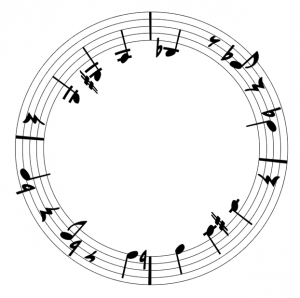A listen to a few of the Beatport Top 10 yields a trend parallel to the same EDM tracks that end up there week after week: Deep house has its own formulaic cuts.
Of course, the purists are going to say “But that’s not real deep house!” Whether you want to admit it, every genre has its repetitive, cookie-cutter entries, and as deep house becomes a chart mainstay in the U.K. (and something gaining moderate footing in the U.S.), that’s bound to happen.
The latest offenders? DJ Deeon and Lee Walker’s collaboration “Freak Like Me” almost seems to copy and paste an Oliver Heldens track – think a groovy baseline with a swinging 4/4 beat – with soulful vocals you might find in something by Duke Dumont or Tchami. It’s as if they decided, “Let’s borrow something from this mainstream deep house producer, and then take something else from another well-known producer, and then, it’ll be different.”
Unfortunately, taking two well-tread facets and combining them into something separate doesn’t result in a memorable track. And, the same can be said for Mark Knight and Lee Van Dowski’s “Fall Down on Lee,” which uses a similar approach but just beefs it up a bit.
So, how did we get here? You can finally slap the “banal” label on deep house for these reasons:
Producers Hitting It Big
Speaking of Heldens, his swift mainstream rise mirrors more of the big room/progressive house producer that became huge with just a single track, and from there, he stuck with a template for every new offering.
 While he’s not the first mainstream “deep house” artist over the past few years (most would probably give that distinction to Disclosure), Heldens ended up with the right situation in the wrong time. His first official single “Koala” did well enough to earn a set of vocals accompanying it, and thus “Gecko (Overdrive),” featuring Becky Hill, came to be. But unlike the deep house tracks of yore, the structure goes unfortunately modern: Heldens’ production is pushed deeper down into the mix, while Hill’s bland vocals get layered on top.
While he’s not the first mainstream “deep house” artist over the past few years (most would probably give that distinction to Disclosure), Heldens ended up with the right situation in the wrong time. His first official single “Koala” did well enough to earn a set of vocals accompanying it, and thus “Gecko (Overdrive),” featuring Becky Hill, came to be. But unlike the deep house tracks of yore, the structure goes unfortunately modern: Heldens’ production is pushed deeper down into the mix, while Hill’s bland vocals get layered on top.
From there, a few higher profile collaborations – with Zeds Dead, Tiesto, and Sander Van Doorn – made him a name to watch.
But, if there’s anything positive to say about Heldens, it’s that you can discern his production style the moment an instrumental track comes on. If given the chance to mature, as opposed to churning out hits for Spinnin’, he could be a producer some start to take seriously.
However, Heldens likely playing by Spinnin’s rules isn’t the only one to blame. The past two years have seen an emergence of a new type of mainstream deep house track, from the likes of Dumont, Disclosure, and even Clean Bandit. “Soulful” or ethereal vocals form the backbone – the former a nod to its retro origins, and the latter more of an attempt to appeal to most mainstream EDM fans. Then, the producers take a minimalist approach with production, adding a cymbal and a few handclaps and that same swinging beat, careful to avoid the hard 4/4 feel. And, from there, that’s about it. It’s a simple formula that directly goes against the bombast embodied by big room house: That less is more, is more obscure, and is somehow “better.”
Tropical House
But, the problem with the “less is more” formula is, you can become too minimal, even to the point that the production looks overtly lazy. Making Dumont’s “Need U (100%)” actually seem complex is Felix Jaehn’s remix of OMI’s “Cheerleader.”
 Critics have debated whether “Cheerleader” is the first official deep house song to hit the Billboard Hot 100, and once you get past the dated, insipid lyrics, the track just relies on a rolling beat and an ascending trumpet line. Sure, it captures the down tempo languidness and intertwines it with the original’s dancehall influence, but if any track last year embodied everything basic, “Cheerleader” was it.
Critics have debated whether “Cheerleader” is the first official deep house song to hit the Billboard Hot 100, and once you get past the dated, insipid lyrics, the track just relies on a rolling beat and an ascending trumpet line. Sure, it captures the down tempo languidness and intertwines it with the original’s dancehall influence, but if any track last year embodied everything basic, “Cheerleader” was it.
However, “Cheerleader” isn’t an anomaly. As an off-shoot of deep house, tropical house – coined roughly around the same time “Cheerleader” became a summer staple – relies on this formula. Blend in a hint of dancehall, give it a light, forward-moving beat, and incorporate a dash of percussion or horns, and a slight foundation gets set for the vocals, which, here, get pushed high in the mix. Purely on the dance music side of things, it’s worked for Kygo and Jamie XX, while flowing into the pop music world, Jack U took a similar approach with “Where Are U Now,” which Justin Bieber then replicated with “What Do You Mean?” and “Sorry.” And, if her career didn’t start with “Pon De Replay,” Rihanna’s “Work” also borrows this template.
Of course, these factors don’t negate that plenty of lesser-known producers make quality deep house music. But, as the subgenre’s experiencing its mainstream moment on both sides of the pond, an EDM-like trajectory is bound to happen. Soon enough, some Martin Garrix-like wunderkind will be putting out by-the-numbers tracks that he calls “deep house” with a straight face.





